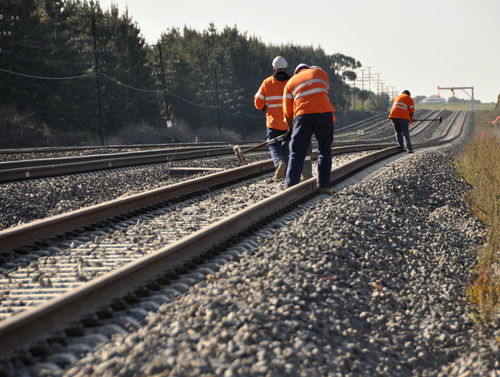Connecting Europe: TEN-T and the need for cross-border interoperability
Posted: 24 April 2024 | Emily Budgen | No comments yet
The TEN-T Coordinators have released their report on the current state of the TEN-T network, its importance, and its path to completion.


The TEN-T Coordinators have released a new paper, detailing the importance of a complete and harmonised TEN-T structure across the European Union.
The report, published earlier this month, has been presented by all eleven coordinators, who have contributed their views on the project, the challenges of undertaking such a development, as well as its relevance in the modern world.
Outlined in the introduction, the purpose of the report is ‘to provide further guidance to the European Institutions and to the Member States’, while a new European Parliament takes its place in 2024.
What is TEN-T?
TEN-T is shorthand for ‘Trans-European transport network’, a European Union initiative that aims for greater connectivity in the member states. The TEN-T network comprises the European Union railways, waterways and roads, creating links across urban areas to maritime and inland ports, airports and terminals.
The TEN-T policy dates back to the last century, in the early 1990s, with a legal basis in the Maastricht Treaty, and its first true implementation in 1994. This development came after the fall of the Iron Curtain, where the Soviet Union was dissolved, and its satellite states rejected their own communist regimes. With the new geopolitical formation of Europe came the need for connectivity between states.
In the Treaty on the Functioning of the European Union (TFEU), under the current Article 170, the Union must try and create transport and telecommunication connections for their member states, trying to overcome any internal barriers or borders.
TEN-T and the Single Market
This report uses the popular epithet for transport, that it is the ‘backbone of the economy’, firstly saluting the importance of TEN-T for trade routes.
This is seen not only in the EU, but also in the UK. In an interview with Global Railway Review, Worldline’s Martin Howell, quoting a study from the Social Market Foundation, said that “if people outside London had access to the same integrated transport network links as people in the capital, four times as many jobs would be available to them, and one and a half million people would be lifted out of poverty instantly.”
If the role of the Single Market is to have full cooperability between member states, an integrated transport network would have to be part of that system.
Currently the TEN-T project, according to a previous 2018 report, if completed by 2030, could lead to a 1.6% growth in EU GDP.
Recommended way forward to complete TEN-T
“To efficiently deploy the transport network and ensure its optimal functionality, it is essential to comprehensively address all stages of network development and associated technologies.” (p.9)
The first aspect outlined in the report is the need for the industry to embrace new technologies, but the completion of such a vast project is at risk.
The report states that in order for the project to reach completion, approximately EUR 845 billion is needed over the next fifteen years, before highlighting the need for private investment. The report caveats this need though, emphasising how such a project might be unattractive to private investors.
In order to rectify the lack of short-term profitability and uncertainty around high speed projects, the report suggests that action is needed. ‘The first regulatory intervention, that is particularly relevant for large transport projects that often span over a long implementation period, is to provide legal certainty regarding the public backing for those projects (p10)’. In addition to this, the report states ‘public authorities should modify the legal framework to explicitly facilitate and accelerate administrative procedures linked to public interest projects, in particular the permitting, concession, and public procurement procedures (p11)’.
“Public procurement procedures can cause delays, risking the loss of EU funding. To address this, targeted technical assistance should be established to support Member States in project planning, preparation, and implementation, ensuring efficient and lasting capacity transfer. Considering the geopolitical context, extending this advisory support to Ukraine and Moldova may be worth considering,” said coordinator Inés Ayala Sender.
With a changing geopolitical and economic landscape, there is still a desire for an interoperable cross-border network. Its path to completion, however, might have to involve some legislative changes.
Readers can read the full report in PDF format here.
More Like This
The HS2 Timeline: Part 1
California High-Speed Railway Timeline: Part 1
“A call to arms”: how many women work in transport?
Related topics
Infrastructure Developments, Multimodality, Standardisation & Technical Harmonisation, Technology & Software, The Workforce








